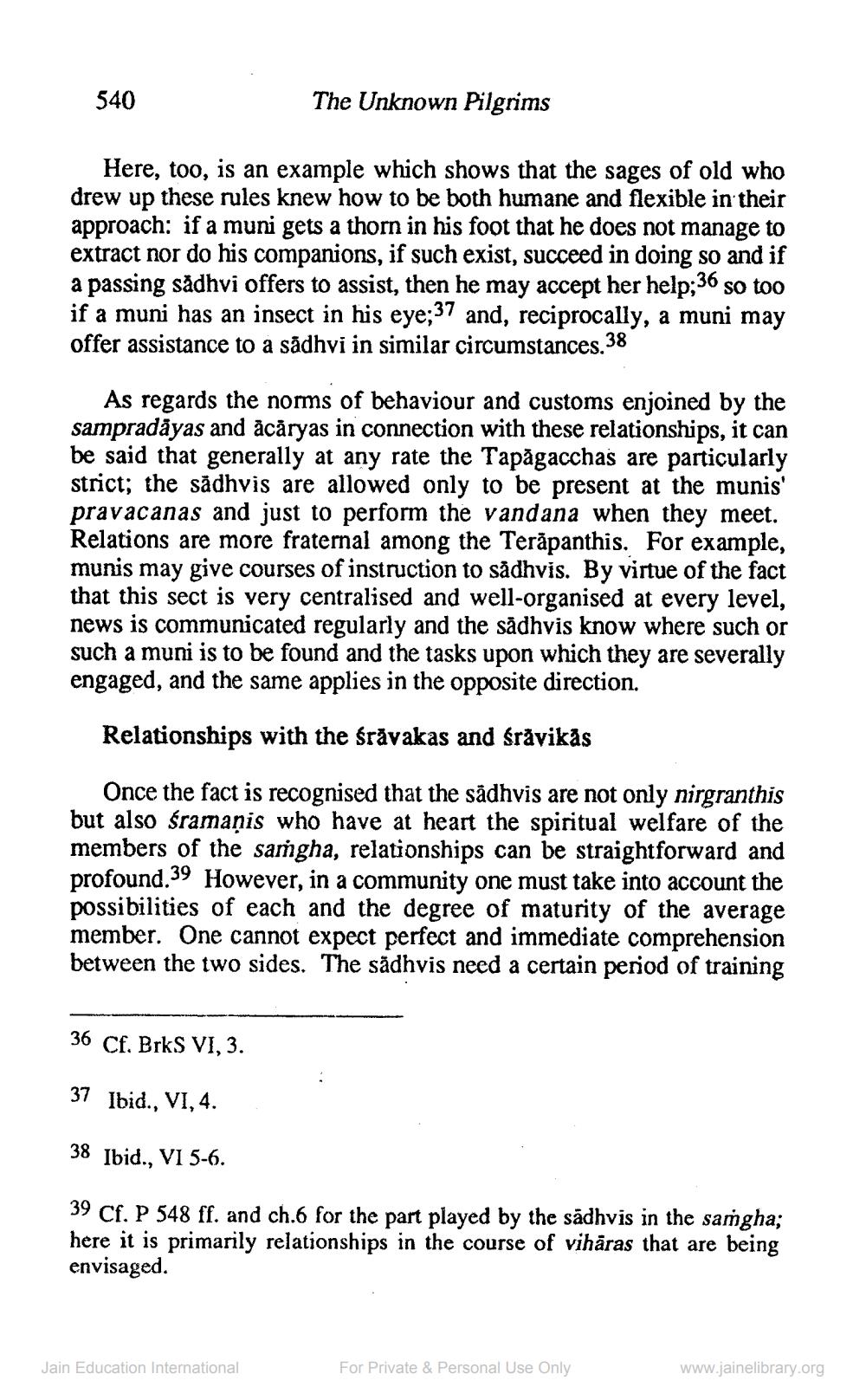________________
540
The Unknown Pilgrims
Here, too, is an example which shows that the sages of old who drew up these rules knew how to be both humane and flexible in their approach: if a muni gets a thorn in his foot that he does not manage to extract nor do his companions, if such exist, succeed in doing so and if a passing sådhvi offers to assist, then he may accept her help;36 so too if a muni has an insect in his eye;37 and, reciprocally, a muni may offer assistance to a sādhvi in similar circumstances. 38
As regards the norms of behaviour and customs enjoined by the sampradayas and acāryas in connection with these relationships, it can be said that generally at any rate the Tapāgacchas are particularly strict; the sādhvis are allowed only to be present at the munis' pravacanas and just to perform the vandana when they meet. Relations are more fraternal among the Terăpanthis. For example, munis may give courses of instruction to sådhvis. By virtue of the fact that this sect is very centralised and well-organised at every level, news is communicated regularly and the sādhvis know where such or such a muni is to be found and the tasks upon which they are severally engaged, and the same applies in the opposite direction.
Relationships with the śrävakas and Srāvikās
Once the fact is recognised that the sadhvis are not only nirgranthis but also śramaņis who have at heart the spiritual welfare of the members of the saṁgha, relationships can be straightforward and profound.39 However, in a community one must take into account the possibilities of each and the degree of maturity of the average member. One cannot expect perfect and immediate comprehension between the two sides. The sãdhvis need a certain period of training
36 Cf. Brks VI, 3.
37 Ibid., VI, 4.
38 Ibid., VI 5-6.
39 Cf. P 548 ff. and ch.6 for the part played by the sadhvis in the samgha; here it is primarily relationships in the course of vihāras that are being envisaged.
Jain Education International
For Private & Personal Use Only
www.jainelibrary.org




